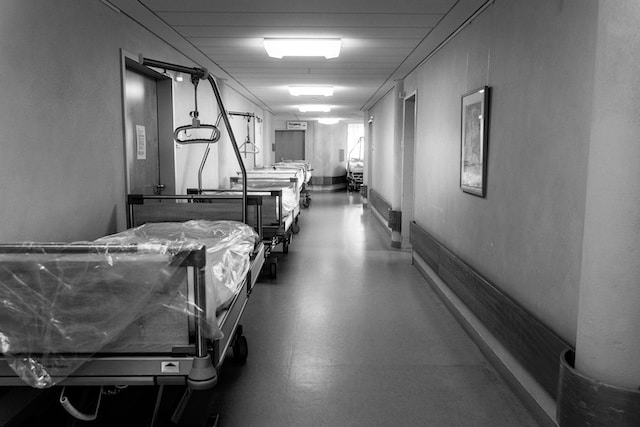The Profitable Paradox: How Our Healthcare System Benefits from Keeping You Sick
In a world captivated by medical marvels, it is disconcerting to observe our healthcare system’s bias for reactivity over proactivity. Beneath the surface of this paradox lies a disheartening revelation: the system thrives on extending life rather than fostering lasting health. As we embark on this expedition, we shall dissect the intricacies, unearth the web of intertwined interests, and advocate for a transformative shift towards proactive healthcare.
Table of Contents
ToggleThe Dollar Dilemma: Prioritizing Extended Life over Extended Health

The heartbeat of healthcare seemingly pulses with the promise of healing and well-being. However, a closer examination reveals a dissonant reality: a significant focus on treating ailments, often overshadowing the noble goal of prevention. The allure of financial gain incentivizes the treatment of symptoms and illnesses, inadvertently sidelining the quintessential pursuit of extended health. The question arises: how did we become entrapped in a cycle that perpetuates reactivity rather than embracing proactive measures?
The Profit Paradigm
In the realm of healthcare, financial incentives can subtly shift priorities. Physicians and healthcare facilities are often remunerated based on treatments and procedures, leading to a systemic bias towards reactive interventions. This model, while ensuring revenue generation, inadvertently discourages doctors from dedicating adequate time to preventive measures or lifestyle counseling.
The Overlooked Precursors
Prevention is akin to a puzzle – the pieces of which are often found in early signs and subtle warnings. Unfortunately, our healthcare system tends to overlook these precursors, missing valuable opportunities for intervention. For instance, routine check-ups might be limited to addressing current issues, rather than identifying potential risks and initiating proactive strategies to mitigate them.
Nutrition and Exercise: The Neglected Pillars of Disease Prevention

Amid the cacophony of medical interventions, the age-old allies of well-being—nutrition and exercise—often stand muted and overlooked. Despite an ever-growing repository of evidence spotlighting their prowess in disease prevention and symptom amelioration, these stalwart elements are relegated to the shadows.
A curious societal mindset diminishes nutrition and exercise as afterthoughts, undermining their potential as formidable deterrents against disease risks. How did we arrive at a crossroads where the very foundations of health have been marginalized?
The Modern Malnutrition
Our modern food landscape, dominated by processed and convenience foods, contributes to a crisis of malnutrition. Paradoxically, while we might consume an excess of calories, our bodies are often starved of essential nutrients. This nutritional imbalance serves as a fertile ground for the development of chronic illnesses.
Sedentary Lifestyles: A Silent Epidemic
In an era defined by technological convenience, physical activity has become a casualty. Sedentary lifestyles, marked by prolonged periods of sitting and limited movement, correlate strongly with the rise of obesity, cardiovascular diseases, and diabetes. It’s a quiet epidemic with far-reaching consequences.
Reclaiming Exercise: Your Pathway to Enhanced Well-Being
Incorporating regular exercise into your life not only benefits your physical health but also provides a holistic boost to your overall well-being. Discover the profound impact of exercise on mood elevation, increased energy levels, heightened libido, and its potent role in shielding you from a myriad of diseases.
The Conspiracy of Interests: Government Agencies, Pharmaceutical Industry, and Food System

The stage is shared by disparate actors—USDA, FDA, Medicare, Medicaid, and the colossal Pharmaceutical Industry—each with its role, each with its agenda. This intricate choreography, however, raises suspicions of a symphony with discordant undertones. A critical lens unveils a tapestry where governmental agencies and the pharmaceutical behemoth intersect, all while the food system stands as an unwitting accomplice.
Paradoxically, government subsidies intended to nurture agriculture inadvertently nurture the proliferation of unhealthy dietary choices. How did this delicate equilibrium evolve into a paradox that jeopardizes public well-being?
The Politics of Plate
The food we consume is intricately intertwined with government policies, which often prioritize economic interests over public health. Subsidies that support the production of certain crops influence food prices, making unhealthy options more affordable than nutrient-rich alternatives. This system not only impacts individual choices but also contributes to a broader narrative of a reactive healthcare system.
Prescription for Profit
The relationship between the pharmaceutical industry and healthcare has grown increasingly complex. Marketing strategies often focus on treating symptoms, rather than addressing root causes. The profit-driven nature of the pharmaceutical industry can inadvertently perpetuate a cycle of dependency on medications, leaving the pursuit of proactive health measures in the background.
The Sick Care System: Profits over Wellness

The term “healthcare” evokes a vision of nurturing, of holistic care. Alas, the reality sometimes diverges—a system that dances dangerously close to being a “sick care” model. Chronic illnesses, a wellspring of fiscal abundance, fuel this paradox, perpetuating a cycle where fiscal gains trump authentic well-being. This dynamic leads us to question: how did the noble pursuit of health metamorphose into a pursuit of profits?
Chronic Conundrum
Chronic illnesses, often preventable through lifestyle modifications, account for a substantial portion of healthcare costs. Yet, the emphasis on treating these illnesses, rather than preventing them, not only burdens the healthcare system but also perpetuates a cycle of patient dependency. This reactive approach tends to prioritize immediate gains over long-term well-being.
The Human Cost
Behind the staggering statistics of chronic illness-related healthcare costs lies the human toll—diminished quality of life, reduced life expectancy, and the emotional burden on individuals and their families. The focus on treating symptoms rather than addressing underlying causes can lead to a cycle of recurrent illness, impacting patients’ overall well-being.
Shifting Paradigms: Towards a Proactive Healthcare Model

Amidst the labyrinthine complexities, glimmers of hope beckon from the periphery—a proactive healthcare model that exalts prevention and wellness. A paradigm that thrives on preemptive measures, holistic education, and conscientious lifestyle adjustments.
Notable initiatives from disparate corners of the globe serve as beacons, illuminating a path towards a healthier future. The question lingers: how can we navigate the currents of change to steer our healthcare ship towards these promising shores?
Empowerment through Education
Education emerges as a cornerstone of a proactive healthcare model. By equipping individuals with knowledge about nutrition, exercise, and disease prevention, we empower them to make informed decisions and take control of their well-being. Schools, workplaces, and communities can play a pivotal role in spreading awareness and providing practical tools for healthier living.
Holistic Healthcare Heroes
From community-based wellness programs to integrated healthcare models, various initiatives are championing a holistic approach. These models prioritize not just the absence of disease, but the enhancement of overall physical, mental, and emotional well-being. Holistic healthcare focuses on addressing the root causes of health issues, considering factors such as nutrition, exercise, stress management, and mental health.
Conclusion
As we unravel the enigma of our healthcare system, we confront stark realities of reactivity. A culture fixated on prolonging life inadvertently sidelines the essence of lasting health. The tapestry of interconnected interests weaves a tale of entanglement that challenges the very foundation of our well-being. Yet, amidst the labyrinth of challenges, a light beckons—a vision of proactive healthcare.
A vision where prevention is paramount, where wellness takes precedence over the mere passage of time. The compass now rests in the hands of individuals, policymakers, and society—an opportunity to rewrite the narrative, to carve a trajectory towards a future where vibrant health thrives.








